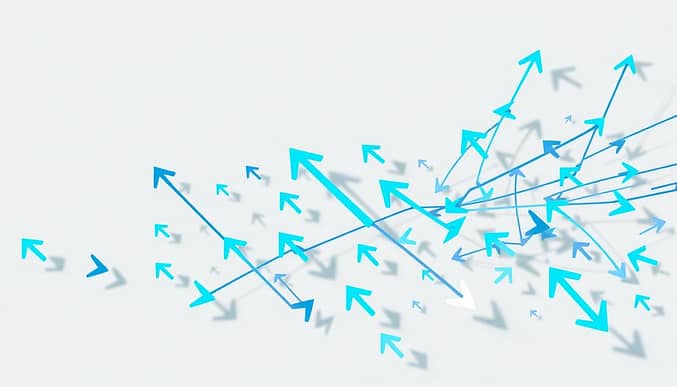How to Fix Redirect Error in Google Search Console
Website owners often encounter unexpected hurdles when managing page transitions. One common issue flagged in Google Search Console involves failed URL redirects, which can disrupt search engine visibility and user navigation. These errors occur when a requested page doesn’t properly forward visitors or bots to its intended destination.
Ignoring these warnings risks crawl budget depletion and weakened SEO performance. Search engines prioritize efficient indexing, and broken redirects create dead ends that waste resources. Over time, unresolved issues may cause ranking declines or missed traffic opportunities.
This guide simplifies troubleshooting by breaking down root causes—like chains of multiple redirects or misconfigured HTTP codes. You’ll learn practical strategies to streamline page transitions while preserving link equity. Whether you’re handling site migrations or routine updates, addressing these errors promptly ensures smoother crawling and better user experiences.
Key Takeaways
- Redirect errors hinder search engines from properly indexing your content.
- Unresolved issues waste crawl budget and dilute ranking signals.
- Common triggers include loops, long chains, and incorrect destination URLs.
- HTTP status codes (like 301 vs. 302) dictate how bots interpret redirects.
- Proactive monitoring tools help prevent future configuration mistakes.
Understanding Redirect Errors in Google Search Console
Digital platforms frequently face technical glitches during content migrations. These challenges become apparent when servers return unexpected responses instead of loading requested pages. Properly configured redirects guide both visitors and crawlers—but failures create barriers that harm visibility.

What Are Redirect Errors?
Redirect errors occur when a 3xx status code doesn’t lead to a valid destination. For example, chains of five or more redirects often trigger browser warnings like ERR_TOO_MANY_REDIRECTS. Google’s crawlers may abandon such paths, leaving pages unindexed.
Common causes include:
- Loops where URL A points to B, which redirects back to A
- Links pointing to outdated or deleted pages
- Server configurations applying redirects site-wide
Impact on Website Indexing and SEO
Search engines allocate limited resources to crawl websites. Broken redirects waste this budget, reducing how many pages get indexed. Users also encounter dead ends, increasing bounce rates.
Pages stuck in redirect loops never return a 200 OK status. Without this signal, crawlers treat them as inactive. The URL Inspection tool in Search Console helps pinpoint these issues by showing exact crawl outcomes.
Pro Tip: Audit redirects quarterly. Fixing them preserves link equity and ensures content remains accessible to both bots and visitors.
Common Causes and Diagnosis of Redirect Issues
Technical oversights during site updates often surface as redirect complications. These missteps create roadblocks for search engines and users alike, requiring precise identification for effective resolution.

Redirect Chains and Loops
Redirect chains occur when multiple URLs sequentially forward requests. Google’s John Mueller advises limiting these to five hops—exceeding this wastes crawl resources. Chains often form during migrations when old links aren’t updated to point directly to final destinations.
Loops happen when Page A redirects to Page B, which circles back to Page A. Bots abandon such paths, leaving critical content unindexed. Regular audits using tools like Screaming Frog help spot these endless cycles before they harm rankings.
Incorrect URL Formatting and Response Codes
Typos like “htttps://” or missing slashes break redirects entirely. Servers return 404s instead of forwarding visitors, compounding SEO damage. Always test URLs for accuracy after implementation.
Mixing 301 (permanent) and 302 (temporary) redirects confuses crawlers. For instance, using a 302 for a permanently moved page delays equity transfer. Consistent proper redirect configuration ensures search engines interpret signals correctly.
Server misconfigurations also trigger unexpected 500 errors. Validate HTTP status codes with browser developer tools or platforms like Redirect Path. Quick fixes preserve crawl efficiency and maintain page indexing momentum.
how to fix redirect error in google search console
Effective website management requires a systematic approach to untangle misdirected paths. Start by analyzing the Page Indexing report in Google Search Console to identify URLs flagged with crawl issues. Prioritize entries marked “Redirect error” or “Crawl anomaly” for immediate action.
Step-by-Step Troubleshooting Process
First, use the URL Inspection tool to test problematic links. Enter the address and review the crawl details—look for unexpected chains or missing destination pages. Manual testing via browser developer tools helps verify response codes like 301 (permanent) or 302 (temporary).
Next, run a full site crawl using Screaming Frog. This uncovers hidden loops or orphaned pages contributing to crawl budget waste. Export the list of redirecting URLs and map their paths to eliminate unnecessary hops.
| Tool | Purpose | Key Feature |
|---|---|---|
| Screaming Frog | Site-wide crawl analysis | Identifies chains longer than 3 hops |
| Link Redirect Trace | Path visualization | Exports redirect maps as CSV |
| Redirect Path | Browser-based testing | Displays HTTP status codes |
Essential Tools for Auditing Redirects
Automated platforms streamline diagnostics. For example, Sitebulb’s redirect chains report highlights paths exceeding recommended lengths. Review server configurations (like .htaccess) to ensure rules don’t conflict with CMS settings.
Maintain a centralized list of corrected URLs for future reference. Regular audits prevent recurring issues—schedule them quarterly or after major updates. As noted in detailed case studies, consistent monitoring reduces indexing delays by 68%.
“Redirects are bridges—build them with precision, or risk losing both traffic and trust.”
Preventative Measures for Future Redirect Problems
Building a stable website architecture demands proactive planning. Redirect mishaps often stem from rushed updates or incomplete audits. Establishing clear protocols minimizes risks and preserves search engine trust.
Implementing Correct Redirect Practices
Always map old URLs directly to their final destinations. For example, avoid linking Page A → Page B → Page C when a single 301 redirect suffices. This reduces redirect chain lengths and preserves crawl efficiency.
Verify status codes using browser inspection tools. Permanent moves require 301 responses, while temporary shifts use 302s. Tools like WordPress redirect configurations simplify this process for CMS users.
| Prevention Tactic | Benefit | Tool Example |
|---|---|---|
| Direct URL Mapping | Eliminates unnecessary hops | Screaming Frog |
| HTTP Code Validation | Ensures proper equity transfer | Redirect Path |
| Canonical Tags | Prevents duplicate content issues | Google Search Console |
Maintaining SEO-Friendly URL Structures
Update internal links during migrations. Broken connections create redirect loops that confuse crawlers. XML sitemaps should reflect current URLs to guide indexing efforts.
Conduct quarterly audits using technical SEO platforms. These checks identify outdated rules or conflicting server settings. As one expert notes:
“A well-structured site is like a roadmap—clear paths lead to better rankings.”
Preserve URL consistency unless absolutely necessary. When changes occur, apply 301 redirects immediately and monitor their performance for 90 days.
Conclusion
Maintaining a technically sound website requires vigilance against misconfigured paths. Chains of redirect URLs drain crawl budgets and confuse search algorithms. Prioritize direct mapping from old addresses to final destinations, eliminating unnecessary hops that slow indexing.
Use permanent redirects (301) for moved content to preserve equity. Temporary solutions often create broken paths, leaving affected pages invisible to crawlers. Validate status codes during audits—proper configurations ensure bots interpret signals correctly.
Regular checks using tools like Screaming Frog identify chains before they escalate. Update internal links pointing to redirect URLs, and monitor crawl reports for anomalies. As one expert notes: “Every hop in a chain is a potential leak in your SEO strategy.”
Struggling with complex configurations? Seek professional audits to streamline many redirects. Consistent maintenance prevents indexing delays and preserves organic visibility.
Ultimately, managing redirects lead to healthier site architecture. Address issues promptly, and watch rankings reflect your technical diligence.